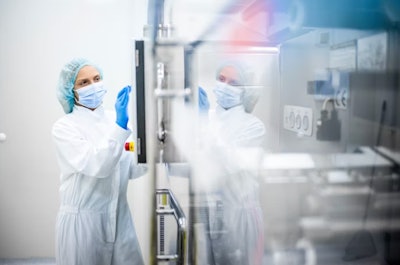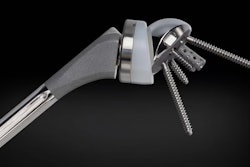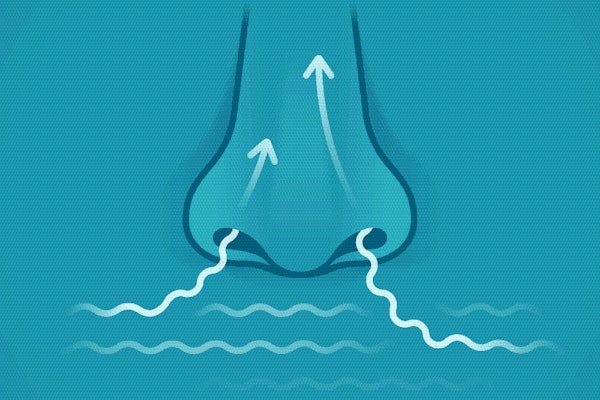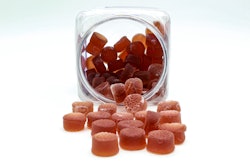
Medical device manufacturers find themselves running into barricades when seeking to help pharmaceutical companies adopt and integrate their systems. This is especially true for the ever-growing landscape of large-volume delivery systems, such as large-volume onbody injectors (LVIs).
Mark DeStefano, director of new device technology, combination products and device research and development at Teva Pharmaceuticals spent the majority of his career in medical device development. At Pharmapack Europe 2024, he shared insights from both perspectives in this industry, the device developer side and the pharmaceutical company side of the situation.
From the selection of drug containment materials and enclosures to device assembly needs and final packaging, DeStefano said the ecosystem and implementation of devices must be carefully considered.
DeStefano explained that, unsurprisingly, pharma is risk-averse and medical device integration increases the risk, perceived risk, and challenges associated with a drug development program.
What device manufacturers should consider
DeStefano listed the following risks that pharmaceutical companies face along with some potential solutions:
- Decision-making on features: The complexity and variety of new device technologies make it difficult for pharma brands to decide on the most suitable option. General uniformity or convergence of technology could prove useful here to provide a level of consistency—even across different device manufacturers—much like in the autoinjector space.
- Data: The risk of device failure can be mitigated by providing comprehensive data on device performance, testing, reliability, and aging. Whatever data a device manufacturer can provide will help minimize perceived risk.
- User interface: The complexity of the device’s user interface—is it simple and easy for patients and providers to use? Is it all bells and whistles? Device manufacturers need to converge on technologies and show pharmaceutical companies that the user interface makes sense for the kind of device and drug combination involved and its intended patients.
- Integration: The overall integration of the device with the drug product—DeStefano suggested that user-assembled products through a contract manufacturer organization (CMO) may be optimal first-generation systems as the drug can be separated from the device. If there is a drug or a device failure, only the failed part is lost, whereas in a pre-filled, pre-assembled piece, both parts would be lost. This would also reduce costs for cold chain storage by minimizing the size of the container. Pre-filled, preassembled systems, if more complex in final post-fill assembly, can present challenges for pharma manufacturing operations initially but as a life cycle management opportunity can provide a simpler user experience.
- Post-fill device assembly: The assembly process complexity is another area where pharma companies tend to be very risk-averse. Does the process require developing custom automation? Does it require following a number of steps—remove a label, move a part, twist here, and turn there—that will require a lot of training or complex manufacturing systems? Here DeStefano says the device manufacturer has two choices: 1) try to force the pharma company to integrate the process into their lines and train their workforce, or 2) create an assembly process or develop the assembly systems with an external supplier that provides the pharma company with a turnkey solution, which will allow them to focus on the drug.
- Containers: Drug containment choices are an area in which device manufacturers can also mitigate stress and risks for the pharmaceutical company as they will generally want to stick with the drug containers they’ve been using previously. New drug containers or new container materials add stability risk, according to DeStefano, who suggests leveraging what the pharmaceutical company already knows. He further suggests providing second source options and reaching out to the CMO directly to develop filling processes and capabilities, so the pharmaceutical companies don’t have to spend time during the drug development effort to also develop a filling process for a new type or size of container. This can be done later as a life cycle management opportunity.
- Device packaging: Beyond price considerations for cold storage, DeStefano mentions that brands are looking more into recyclability or end-of-life of the package. Additionally, device companies that have taken the initiative to develop basic packaging for both clinical and commercial use and have explored the device/drug distribution options will also help reduce the device risk profile for pharma. Having answers to simple questions, such as “How will clinical and commercial packages differ?” will help de-risk this area of development for pharma. For example, pharma may want to bulk package the device for clinical applications and then use an individual pack for a final product. If you are bulk packaging product, could that be assembled at the clinical site versus at the pharma site?” Having solution options for these questions readily available may provide a competitive advantage over just having a device solution and can take one additional item off the list of device tasks for pharma to have to accomplish, allowing them to focus on their core strength, drug development and manufacture.
- Electronics: As a whole, the pharma industry is not necessarily ready to handle lifecycle management in terms of electronic components and connectivity. Software development, updates, and lifecycle management, including data management, cybersecurity, and electronic component obsolescence and replacements to keep up with electronic standards and industry changeovers can become overwhelming. The device manufacturers can help by monitoring platforms and designing the devices and managing these lifecycle changes so supplemental submissions can be device-based rather than combination products-based. Manufacturers also need to consider if the added complexity of connectivity has real value to the pharmaceutical companies they serve.
- End of life: Sustainability and disposability are increasingly important in device development. Pharmaceutical companies and device manufacturers are exploring ways to recycle medical-grade materials, reduce material content without compromising structural integrity, and looking into programs for the recycling process. Their collaboration is essential to advancing recycling initiatives and developing sustainable practices within the industry.
“The more solutions device companies can bring to the pharma companies, the less the perceived risk,” said DeStefano.
Essentially, manufacturers need to present not just a device, but a holistic solution that addresses the pharmaceutical company's concerns about risk, complexity, and integration challenges. He emphasized that device manufacturers need to ease the minds of the pharmaceutical companies through collaboration and turnkey solutions to ensure early adoption of medical devices, as late integration further increases risk.
“New device technology comes with uncertain risk that creates even more anxiety for pharmaceutical people, and pharma companies delay device development to the latest possible point of time,” said DeStefano. “If they would've [brought in the device] sooner, they may not have that same risk of failure.”
By not considering device development early on, pharmaceutical companies limit their ability to mitigate potential risks associated with device integration. This delay can lead to hurried decisions later in the development process, where the options for device technology are either limited or not fully explored, potentially compromising the effectiveness and safety of the final product.



















